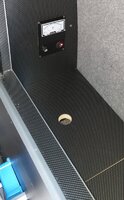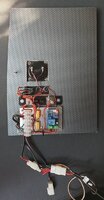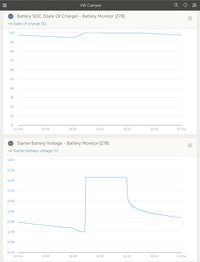You could certainly buy the components for cheaper. You could also certainly DIY one, although I assume you'd only do this if you enjoyed it as a hobby, I can't imagine anyone actually valuing their time so cheaply that they'd build one themselves rather than shell out £27! Personally, I'd quite happily pay £27 to remove the worry that my starter might go flat every time the van is left for a bit, or for extended wild camping.
Having read about the Votronics unit in this thread I built my version of it into the cupboard at the back of the van.
I did this as (a) I enjoy it, (b) I can and (c) I'm retired! Just added a low voltage cut-off module which I had lying around in case the van battery tries to take too much out of the leisure one. And a couple of LEDs on the worktop side of the cupboard to show when it's charging and if the low voltage cut-off has been reached. PTC fuse to be added too, but hasn't arrived yet.















